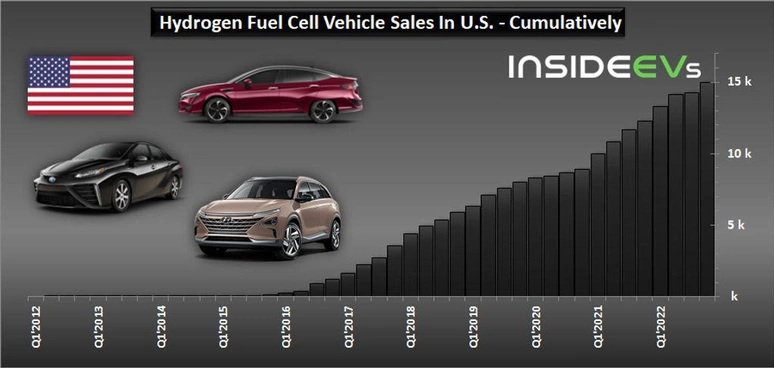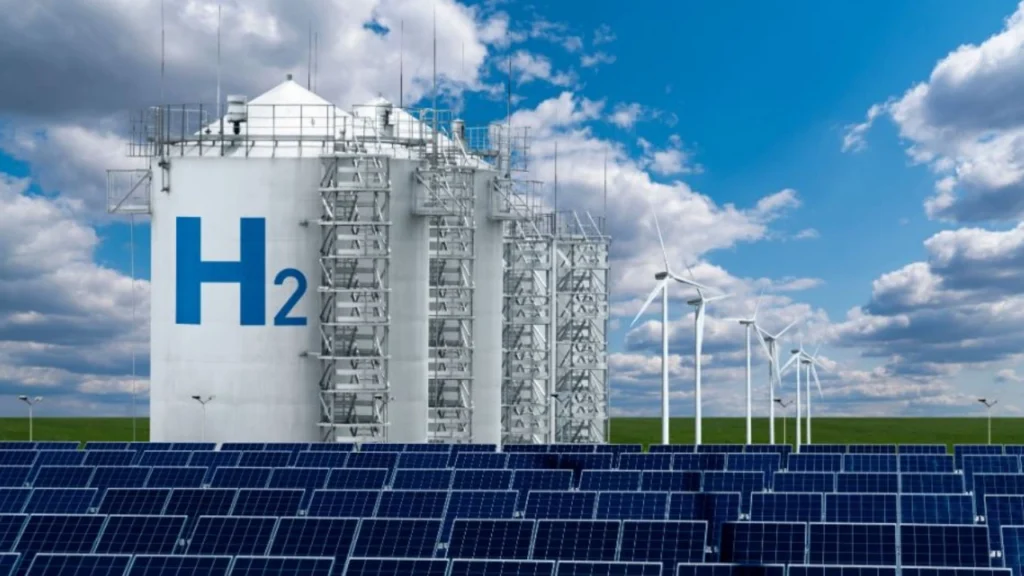Hydrogen energy is anticipated to become a significant part of the global energy system in the coming years. Known as an environmentally friendly option, hydrogen can be easily stored and recognized as a high-energy-density source. When used as fuel, hydrogen emits H2O as a waste product. Hydrogen is considered a strategically important energy source for Turkey to achieve its “Carbon Neutral by 2053” goal. When the costs of hydrogen energy are reduced to the desired level, it will yield two significant outcomes: combating the climate crisis and achieving energy independence.
According to estimates by the International Hydrogen Energy Commission, the hydrogen energy industry will create 30 million job opportunities in the medium term, and the hydrogen energy market will exceed 2.5 trillion dollars. Additionally, the development of the hydrogen industry is expected to reduce CO2 emissions by 6 billion tons. In the coming years, hydrogen energy is predicted to constitute 20% of global energy consumption(1).
DEVELOPMENT GLOBALLY
The Abe administration announced Japan’s first “National Hydrogen Strategy” in December 2017. This plan encouraged other countries to formulate their energy policies. Following Japan, Australia, Canada, Chile, South Korea, China, and Turkey developed their hydrogen strategies. Japan has significant cooperation with Australia, one of the world’s largest hydrogen producers. Australia has successfully completed the world’s first liquefied hydrogen carrier, Suiso Frontier(2). Japan plans to invest 107 billion dollars in hydrogen supply over the next 15 years. Japanese companies aim to increase their current electrolyzer capacity of less than 1 GW to 15 GW by the end of the next decade(3).

Australia first published its “National Hydrogen Strategy” in 2019 and updated it in 2023, highlighting hydrogen’s crucial role in Australia’s “decarbonization” policy by 2030. Australia has made a 300 billion dollar potential investment in the hydrogen pipeline. The National Hydrogen Strategy plan includes the use of hydrogen in industries, transportation, grid reinforcement, chemicals, and metal production(4).
Hydrogen energy has also become part of China’s strategic energy plan. For the first time in 2022, China shared a comprehensive “Mid- and Long-Term Plan for Hydrogen Energy and Industry Development (2021-2035)” with the public. By 2025, China aims to have 50,000 hydrogen fuel cell vehicles and expects renewable hydrogen production to reach 100,000-200,000 tons/year, significantly reducing CO2 emissions. By 2035, a hydrogen energy industry system will be established, and a diversified hydrogen energy application ecology will be built, covering transportation, energy storage, industry, and other fields. Turkey has followed this global trend and prepared the “Turkey Hydrogen Technologies Strategy and Roadmap” by the Ministry of Energy and Natural Resources(5).

In Turkey, the installed capacity of electrolyzers is targeted to reach 2 GW by 2030, 5 GW by 2035, and 70 GW by 2053. The roadmap shows Turkey is following two significant trends in global hydrogen development: electrolysis and fuel cells. Why are these two issues crucial? Electrolysis technology separates water into hydrogen and oxygen molecules to produce fuel. Fuel cells enable the use of hydrogen as energy in various applications – cars, unmanned aerial vehicles (UAVs)-.
CHALLENGES AHEAD FOR HYDROGEN ENERGY
For hydrogen energy to become more affordable in the market, four key issues need to be addressed: production, storage, transportation, and usage. Storage and transportation costs can be reduced with infrastructure planning, which is a separate research topic. The report prepared by China focuses specifically on transportation and storage, emphasizing the importance of planning cities according to hydrogen energy, local production and consumption, and the rapid establishment of extensive charging stations. The other two main topics – production and usage – require significant R&D efforts. The Chinese government is incentivizing research in this area. For instance, the Energy and Power Engineering department at Beihang University, where I am part of, receives special support and incentives from companies, local governments, and the university to conduct research on hydrogen energy. The support helps establish laboratories and encourages Chinese and international students to conduct research in this field, with findings openly shared.
The first challenge is the cheap and clean production of hydrogen. Hydrogen can be produced from natural gas, coal, renewable energy, and fossil fuels using different technologies. Production from natural gas and coal is cheap but results in CO2 emissions to the atmosphere. As these sources are not environmentally friendly and are limited resources, research focuses on electrolyzing water into hydrogen and oxygen. The main issue here is making this technology sustainable and affordable. Proton exchange membrane water electrolysis (PEMWE) technology, which can be integrated with renewable energy sources, is considered one of the most important technologies for hydrogen production. Japan has made significant strides in this area. Although China started relatively late, it has begun incentivizing university research with government planning. Research focuses on corrosion-resistant metal-based (especially Titanium) bipolar plates under high voltage.

The second challenge is using hydrogen as fuel in fuel cells. Here, Proton Exchange Membrane Fuel Cells (PEMFCs) are used. PEMFCs directly and efficiently convert the chemical energy stored in fuel into electrical energy, producing only water as a byproduct; they have the potential to reduce energy use, pollutant emissions, and dependency on fossil fuels. Since PEMFCs operate at low voltage (0.6 V) compared to water electrolysis, more sustainable and cheaper materials (Stainless steel) can be used. The bipolar plate, one of the most significant costs in PEMFCs, can be made more affordable by using stainless steel. Research in this area has largely matured. BMW, Toyota, and Hyundai have made significant progress and have started using fuel cells in their vehicles(6). As of the end of 2022, there has been an increase in the sales of fuel cell vehicles in America(7) (See Figure 2).

CONCLUSION
Turkey’s efforts in hydrogen energy are still in their infancy. More detailed information is available in the “Turkey Hydrogen Technologies Strategy and Roadmap” prepared by the Ministry of Energy and Natural Resources. It’s crucial to focus on international collaborations and increase researchers in hydrogen technologies (Non-technological needs items 18 and 19). Collaborations with countries and universities from Japan, South Korea, and China should be pursued. China’s report in 2022 highlights the importance of hydrogen energy for the Belt and Road Initiative, and China has advanced laboratory facilities available. This context should be considered within the Belt-Road framework to facilitate technology transfer, R&D projects, and university exchange programs between the two countries. As China possesses the world’s largest installed capacity of renewable energy and extensive infrastructure for hydrogen production to usage, its experience should be leveraged. Turkey should consider hydrogen energy in the production of national automobiles, UAVs, and UAVs. Prototype designs for future fuel stations should be developed, and the production of automobiles with fuel cells should be encouraged. Universities should establish laboratories for research on reducing electrolysis costs, and individuals researching this area should be incentivized.
References:
1.Zhang, G. and Z. Jiang, Overview of hydrogen storage and transportation technology in China. Unconventional Resources, 2023. 2.article. 3.https://www.reuters.com/business/energy/japan-invest-107-bln-hydrogen-supply-over-15-years-2023-06-06/. 4.https://www.dcceew.gov.au/energy/publications/australias-national-hydrogen-strategy. 5.https://enerji.gov.tr/Media/Dizin/SGB/tr/Kurumsal_Politikalar/HSP/ETKB_Hidrojen_Stratejik_Plan2023.pdf. 6. https://www.fastechus.com/blog/vehicle-manufacturers-working-on-hydrogen-fuel-cell-vehicles. 7.https://insideevs.com/news/668706/us-hydrogen-fuel-cell-car-sales-2023q1/.





